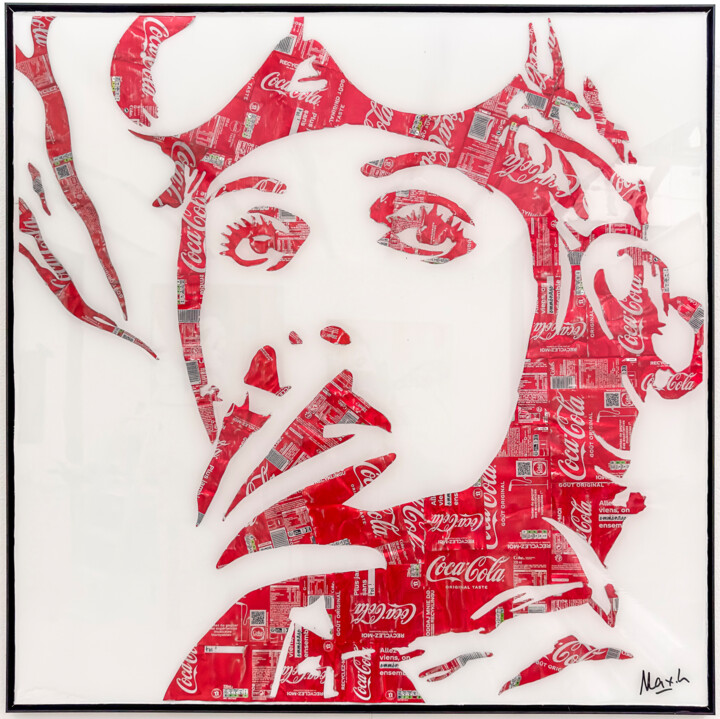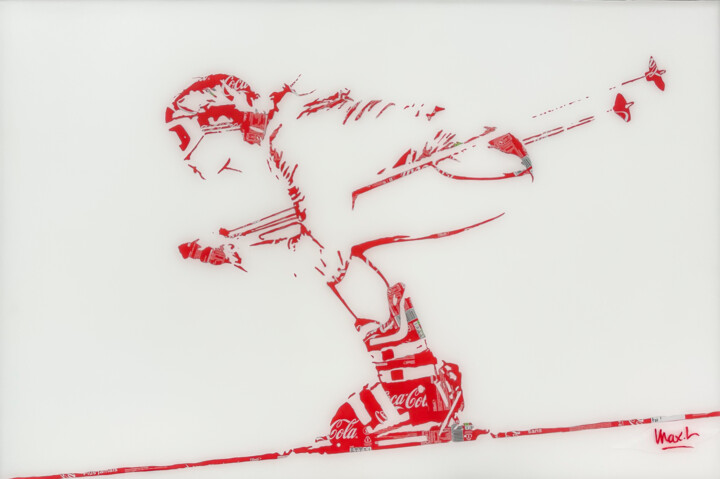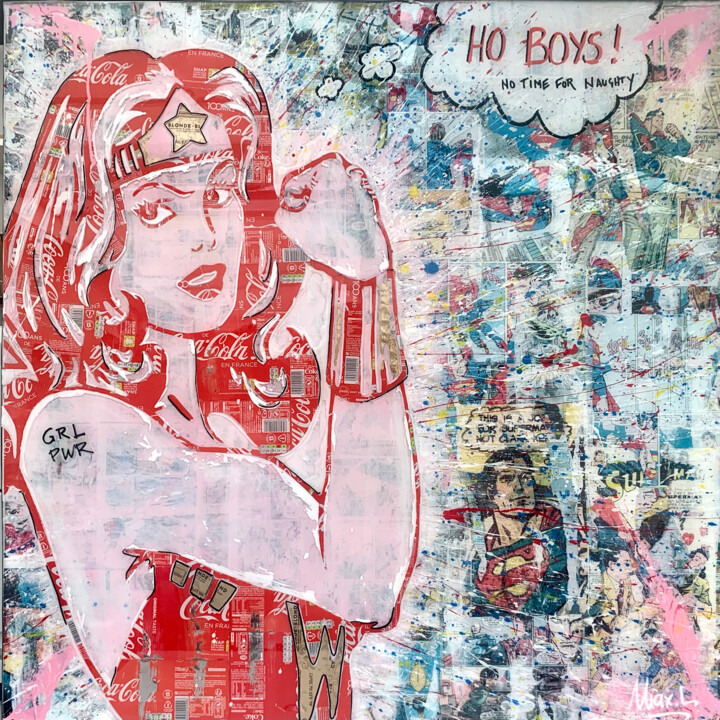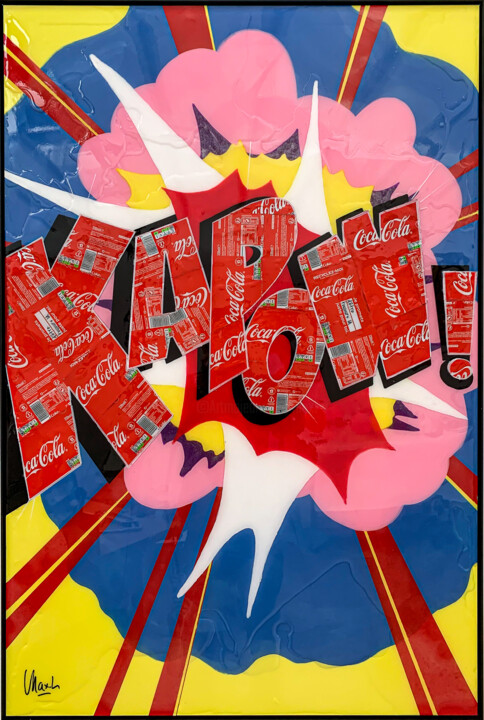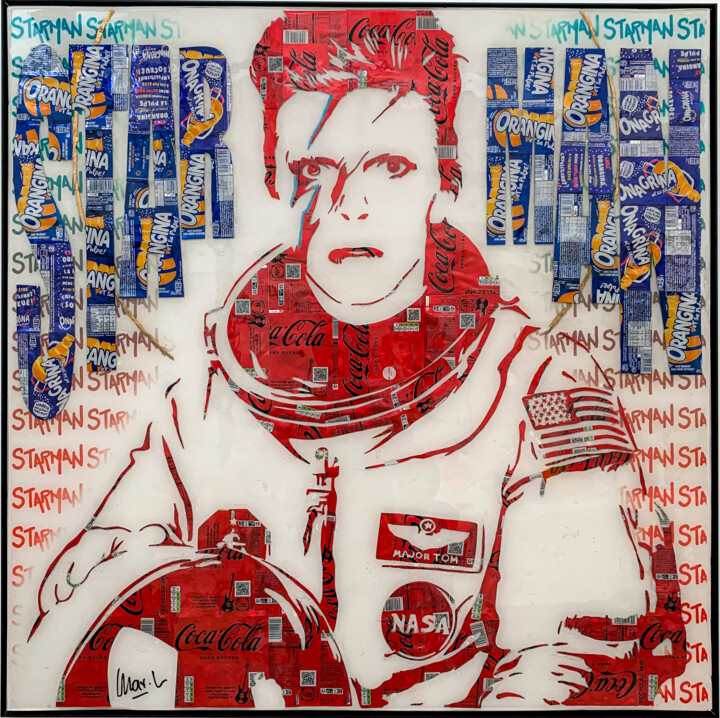What inspired you to create works of art and to become an artist? (events, feelings, experiences...)
Creation is a visceral need necessary for my personal balance. I've always admired craftsmen, all those who work with their hands and are capable of achieving goldsmith's work. After 40 years, I lost myself, and the only way to reconnect was to start creating. One does not become an artist, one is one by essence. It is the opinion of others, good or bad, that is the only judge.
What is your artistic background, the techniques and subjects you have experimented with so far?
My relatively short artistic journey can be summed up in this last decade. Multidisciplinary, I experimented with photography, painting, sculpture. I like to mix and cross different mediums to make original works. Today I work on works under the artist name MaxL, mainly paintings created from soda cans cut with shears then glued on a dibond a bit like marquetry. Then I also create 4 hands works with my alter ego Willie Dobler under the pseudonym Miscellious. Sublimation, resin, cutting... The works and techniques are also varied. We don't want to limit ourselves in the creative process.
What are the 3 aspects that differentiate you from other artists, making your work unique?
What makes me different from my peers? Probably the medium used, namely cans... Even if more and more artists are considering the use of products that normally end up in the trash. In short, I know few or no artists who work cans with shears. The whole gives a unique work.
Where does your inspiration come from?
Paintings in cans were originally inspired by mosaics. I was looking for an original medium. I looked for the material with which I could replace the mosaic tiles and I didn't have to look far. I realized that you just had to bend down to pick up soda cans in the street and, in addition, in all countries. Cans that can be found in different colors for my greatest happiness...
The inspiration for my works comes to me like most of my peers in observation, which I have also sharpened with photography. Reading, series, cinema, advertising...popular culture is an endless pool.
What is your artistic approach? What visions, sensations or feelings do you want to evoke in the viewer?
Triggering emotions in the viewer remains my main objective. The simple fact of being able to tell myself that we can make people smile, bring a little happiness or evoke beauty from simple cans is a victory for me.
What is the process of creating your works? Spontaneous or with a long preparatory process (technical, inspiration from art classics or other)?
There are no written rules. Some ideas come to me spontaneously through observation, but the creative process is then long because the steps are numerous and I can't afford to launch a creation that will last 3-4 weeks on average without having an idea of the final result.
So I usually start with a digital model to validate my idea. Then the background as well as the drawing. Then comes the cutting and gluing of the cans, the most perilous part, then the casting of the resin.
Do you use a particular working technique? if so, can you explain it?
No particular technique except cutting the cans with shears.
Are there any innovative aspects in your work? Can you tell us which ones?
I wish I could tell you that my work is innovative but in truth I am not inventing anything. I transform, I cut, I glue, I resin. On the other hand, I am constantly looking for ideas and techniques to develop this work.
Do you have a format or medium that you are most comfortable with? if yes, why ?
I really like the square format because it can find its place anywhere. However, some creations require a landscape or portrait format. Everything therefore depends on the initial idea to be shaped.
Where do you produce your works? At home, in a shared workshop or in your own workshop? And in this space, how do you organize your creative work?
I am lucky to be able to produce my works in a workshop that is made available to me. As it is a sublimation workshop, in which I also work, the spaces are vast and numerous. This allows you to resin in one corner and cut in another without getting in the way too much. I can therefore work on several works at the same time.
Does your work lead you to travel to meet new collectors, for fairs or exhibitions? If so, what does it bring you?
My works are sold abroad for some but I have not yet had the opportunity to travel to meet new collectors. Maybe in the coming months? Who knows ?
How do you imagine the evolution of your work and your career as an artist in the future?
The fact of being able to sell his works and live from his work is already a recognition of my work.
What is the theme, style or technique of your latest artistic production?
I vary my productions according to my mood but I always come back around Pop Art... I like the colorful and festive side that emanates from these works. It brings a touch of happiness and I remain convinced, that it puts the banana when you have a painting of this style at home.
Can you tell us about your most important exhibition experience?
I've done a few exhibitions and I have more to come, but I don't have one that I thought was more important than the others. Each met their audiences at their level and they were all important to me. I always enjoy talking about my works with the public I meet.
If you could have created a famous work in the history of art, which one would you choose? And why ?
Probably a work of Roy Lichenstein. Advertising, comic strips have entered the artistic field and have been put forward by this artist among others. Maybe wow! for its dynamic and very colorful side or Drowning Girl. Certain works by Andy Warhol also speak to me a lot and we find codes in these works which inspired me, such as the Elvis Double or the portrait of Marilyn Monroe...
If you could invite one famous artist (dead or alive) to dinner, who would it be? How would you suggest he spend the evening?
Roy Lichenstein who remains one of the most important artists of Pop Art! A simple dinner to talk about
his vision of the artistic world.


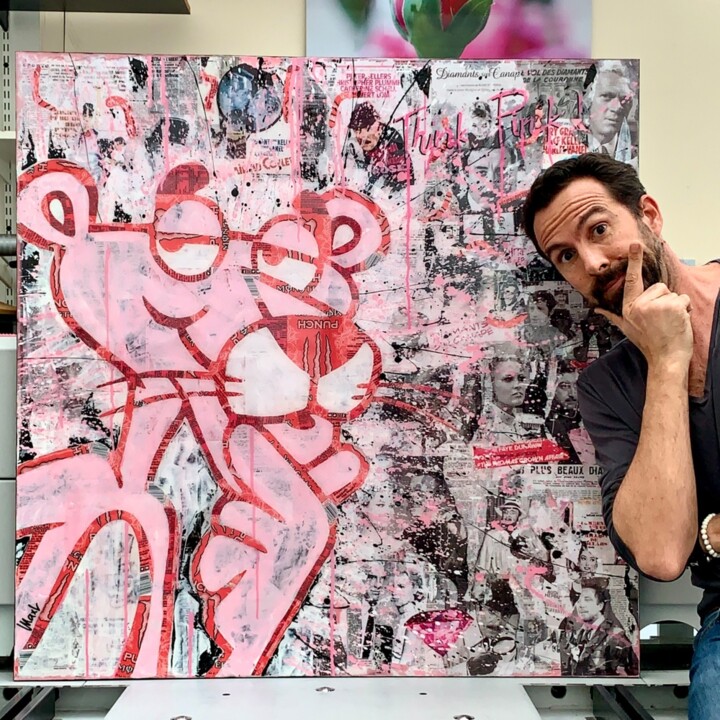




 Olimpia Gaia Martinelli
Olimpia Gaia Martinelli


